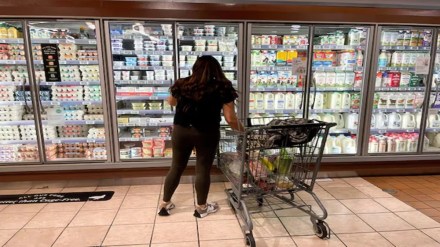The domestic fast-moving consumer goods (FMCG) market grew 11% overall between January and March 2025 compared to the same period last year, driven by small packs and rural consumption, NielsenIQ said on Thursday. The market researcher though flagged the mixed consumption signals.
Rural demand for FMCG products, which grew four times faster than urban demand in the period, moderated sequentially in the quarter (8.4% versus 9.2% reported in the December quarter). Annually, the picture is comparatively better (7.2% growth a year ago). Overall, March quarter FMCG volume growth stood at 5.1% and price-led growth was 5.9%, NielsenIQ said.
Despite the mixed picture, rural continues to be the chief engine of growth for the sector, Roosevelt D’Souza, head of customer success, FMCG, NielsenIQ said, with urban demand further decelerating in the quarter compared both annually and sequentially. Urban contributes two-third of FMCG sales, while rural contributes the rest.
“Rural markets continue to drive growth, while urban metros continue to see a shift toward e-commerce with higher shopper engagement. With a favourable monsoon forecast and revised tax slabs, consumption is likely to pick up in the upcoming quarters,” D’Souza said.
At 2.6% in the March quarter, urban volume growth is half of the volume growth reported a year ago (5.3%) and significantly below the 4.2% reported in the December quarter, the research agency said, pointing to the stress that urban consumers continue to feel, a point that has been highlighted by most top FMCG firms in recent months. Most firms are counting on a revival in FMCG from the April quarter onwards as the fiscal stimulus measures announced by the government begin to show.
For now, small brands are taking advantage of tighter consumer budgets, pitching themselves as alternatives to big names. NielsenIQ said that small players reported the highest FMCG growth at 17.8% year-on-year in the March quarter, followed by mid-sized players who grew 14.2% versus last year in the quarter under review. Small and mid-sized players make up 35% of the Rs 5-lakh crore domestic FMCG market. A low base, rural growth and easing inflation are helping small players to outpace FMCG growth, NielsenIQ said.
FMCG giants, meanwhile, who have topline exceeding Rs 5,000 crore, saw overall growth at 6.4% in the March quarter, driven by price growth of 1.7% and volume growth of 4.7%, which is half of the year-ago period (8.1%), but higher than the 2.5% reported in the December quarter.
In the March quarter, traditional trade, which typically refers to sales from kirana or mom-and-pop stores, increased to 6.2% from 5% in the corresponding quarter last year. Modern trade saw a decline of 3.3% in the quarter, compared to a decline of 1.1% in the October–December period.
Food consumption growth slowed to 4.9% in the quarter ended March 31, 2025 from 6% in the quarter ended December 31, 2024, though it was marginally higher than the 4.4% reported a year ago. NieslenIQ said that the moderation was due to decreased volumes in staple categories like edible oils and palm oil, which saw price increases.
Home and personal care categories, on the other hand, saw a consumption growth of 5.7% in the quarter, as demand from rural areas was higher. But it was lower than the 7.3% growth seen in the December quarter and 10.8% growth seen a year ago.
“E-commerce continues to strengthen its presence significantly in eight metros, impacting the share of offline channels—both modern trade and traditional trade. This growth is largely volume-driven, supported by increasing online shopper penetration, more purchase occasions, and increasing basket sizes,” the research agency added.
